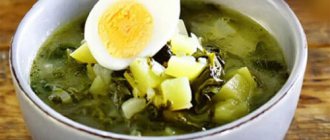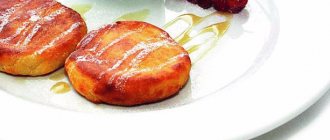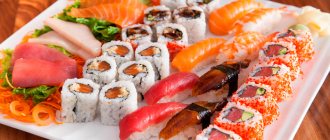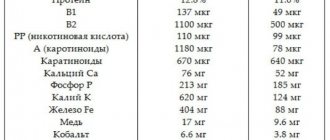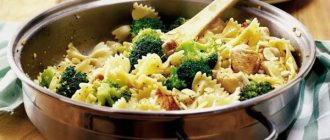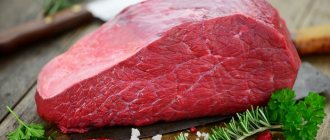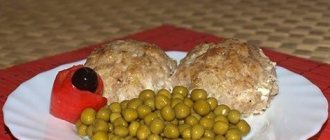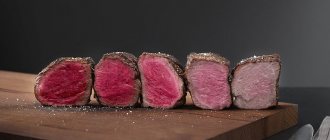What does turkey meat contain?
The calorie content of 100 grams of product is 189 kcal . The same amount of turkey meat has the following nutritional values:
- water (63.52 g);
- carbohydrates (0.06 g);
- fats (7.39 g);
- easily digestible protein (28.55 g);
- ash (18 g).
This protein content allows us to talk about turkey meat as the most suitable for dietary and baby food .
The legs (11 g of fat per 100 g of product) and poultry skin are considered to be the most nutritious and contain the most fat. Cholesterol and other substances that are not very useful for the body are deposited in them. Breast has the least amount of calories - it contains 0.84 g of fat per 100 g of product. A complete protein provides a person with the necessary set of fat-soluble vitamins and a set of amino acids better than cheese.
The rich vitamin composition is presented:
- fat-soluble vitamins A, D, E;
- water-soluble vitamins B1, B2, B3 (PP), B4, B5, B6, B9 and B12.
We recommend reading about the composition, benefits and preparation of duck, goose, guinea fowl, rabbit, and lamb meat.
These vitamins have a great positive effect on the human body :
- In the body, vitamin A plays a role related to the processes of reproduction and growth, support of immunity, vision function and restoration of epithelial tissues.
- Calciferol (vitamin D) has antirachitic properties. Calciferols participate in calcium metabolism in the body: they promote the absorption of calcium from the digestive tract and its accumulation in bone tissue.
- Vitamin E is a natural antioxidant, participates in the biosynthesis of proteins and the most important processes of cellular metabolism.
- B vitamins are involved in all basic processes of the body: they influence metabolism and participate in neuro-reflex regulation.
In addition to proteins, fats, carbohydrates and vitamins, elements play a major role in the human body. To date, more than 70 different macro- and microelements have been found in the tissues of the body. Of these, about 36% are present in turkey.
Composition and calorie content
Turkey is a dietary, low-calorie meat that is recommended to be included in the diet of both men and women. Poultry meat, heart, liver and stomachs have a rich chemical composition and are used in preparing dishes for a healthy and proper diet.
The calorie content of fresh turkey per 100 g is 275.8 kcal. Depending on the method of heat treatment and the selected part of the bird, the energy value changes as follows:
- boiled turkey – 195 kcal;
- baked in the oven – 125 kcal;
- steamed – 84 kcal;
- fried without oil – 165 kcal;
- stewed – 117.8 kcal;
- poultry stomachs – 143 kcal;
- liver – 230 kcal;
- heart – 115 kcal;
- turkey fat – 900 kcal;
- skin – 387 kcal;
- breast without/with skin – 153/215 kcal;
- legs (shin) with skin – 235.6 kcal;
- thighs with skin – 187 kcal;
- fillet – 153 kcal;
- wings – 168 kcal.
Nutritional value of raw poultry per 100 g:
- fats – 22.1 g;
- proteins – 19.5 g;
- carbohydrates – 0 g;
- water – 57.4 g;
- dietary fiber – 0 g;
- ash – 0.9 g.
The ratio of turkey meat BJU per 100 g is 1:1.1:0, respectively. A remarkable feature of the product is that the protein contained in the composition is absorbed by the body by approximately 95%. Thanks to this, fillet (boiled, baked, etc.), as well as other parts of the bird, are suitable for sports nutrition and are recommended for people who want to lose extra pounds without compromising muscle mass.
The chemical composition of turkey per 100 g is presented in table form:
| Name of substance | Quantitative content in the product composition |
| Chromium, mg | 0,011 |
| Iron, mg | 1,4 |
| Zinc, mg | 2,46 |
| Manganese, mg | 0,01 |
| Cobalt, µg | 14,6 |
| Potassium, mg | 210 |
| Sulfur, mg | 247,8 |
| Calcium, mg | 12,1 |
| Phosphorus, mg | 199,9 |
| Magnesium, mg | 18,9 |
| Chlorine, mg | 90,1 |
| Sodium, mg | 90,2 |
| Vitamin A, mg | 0,01 |
| Vitamin B6, mg | 0,33 |
| Thiamine, mg | 0,04 |
| Vitamin B2, mg | 0,23 |
| Folates, mg | 0,096 |
| Vitamin PP, mg | 13,4 |
| Vitamin E, mg | 0,4 |
In addition, the product contains mono- and polyunsaturated fatty acids, such as omega-3 in the amount of 0.15 g, omega-9 - 6.6 g, omega-6 - 3.93 g, linoleic - 3.88 g per 100 g. Meat contains replaceable and essential amino acids.
Taste qualities
The taste of the carcass is determined by what the bird was fed. Therefore, many people prefer to buy carcasses from farmers rather than in stores. Broth or soup with such meat is very aromatic, stimulates appetite, increases energy levels and invigorates.
The taste preferences of each person are individual, but turkey is considered to be a more delicious and tasty meat than chicken, beef or pork.
Diet turkey casserole
Ingredients:
- Turkey fillet – 600 grams
- Raw potatoes - 1 kilogram
- Broccoli – 400 grams
- Milk – 1 Liter (For sauce)
- Butter – 100 grams
- Wheat flour - 100 grams
- Salt, pepper - To taste
How to make Diet Turkey Casserole
- Cut the pre-cleaned and washed meat into small pieces.
- Cut the washed, peeled potatoes into small pieces.
- Place turkey in a baking dish, then potatoes, then broccoli on top, add salt and pepper to taste.
- Prepare the sauce. Melt the butter in a frying pan, add flour and lightly fry, stirring. Some kind of lumps should form.
- Pour in the milk, cook everything until thickened, stirring constantly. Add salt and pepper.
- Pour sauce over turkey and vegetables.
- Preheat the oven to 180-190 degrees. Bake the dish for 60 minutes until a delicious golden brown crust forms. Bon appetit!
What are the benefits of turkey meat?
The set of macro- and microelements, as well as vitamins, creates a number of unique properties:
- accelerates intracellular processes and metabolism in the body;
- prevents the risk of anemia;
- has a positive effect on the functioning of the myocardium and circulatory system;
- normalizes blood pressure;
- replenishes the amount of calcium in the body and forms the skeletal system;
- protein, as a source of natural protein, helps in the development of muscle mass.
Turkey meat is included in dietary and therapeutic nutrition for those recovering from an illness . Positively affects the functioning of the stomach.
Turkey-based broth replenishes strength, saturates the body with useful substances, and strengthens the immune system. It is often used as a means of preventing and treating respiratory viral diseases, influenza, and sore throat. The most delicious and healthy broth is obtained if you add roots (carrots, celery) and herbs to it. After taking the broth, a person’s well-being significantly improves.
Did you know? The biological role of microelements in the life of the body began to be studied only in the first half of the 20th century. The first microelement whose deficiency in the body was noticed was iodine.
For adults
All substances that enter the body of an adult have regulatory, restorative or supporting functions. The number of functions is determined by the set of macro- and microelements and their interaction with each other. Turkey meat saturates the body with energy, gives a boost of vigor and ensures a good psycho-emotional state. Regular consumption of it strengthens the immune system, protects the body from the influence of stress factors, and ensures good quality sleep.
Calcium and phosphorus strengthen the bone apparatus, prevent the development of stagnant processes in bone tissue and other pathologies. Selenium present in meat maintains the balance of hormones and improves the functioning of the body's endocrine system. It has a positive effect on the functioning of the cardiovascular system, removes cholesterol plaques, and prevents atherosclerosis and other vascular diseases. Turkey can be eaten by diabetics due to its low glycemic index.
Potassium is necessary to ensure intracellular processes. Potassium compounds help remove excess fluid from the body. Potassium metabolism disorders lead to dystrophy, kidney and cardiovascular diseases. Sodium is also necessary for intracellular metabolism. It affects the state of short-term memory, the muscular system and intestinal activity.
Important! Children (up to 1.4 g per day), pregnant women (up to 1.5 g per day) and nursing mothers (up to 1.8 g per day) need increased amounts of calcium.
For children
Turkey is a very healthy product for children because it is hypoallergenic and has high nutritional value for a growing body. The benefit lies in the supply of protein, which will be used by the body for the development of the muscular system and potassium to strengthen the skeleton and prevent diseases of the musculoskeletal system. Turkey can be introduced into the diet from 8 months of age as the first meat supplement. Turkey is included in baby food at least 2 times a week.
When feeding babies, you can use vegetables such as broccoli, cauliflower and Brussels sprouts, pumpkin, zucchini, and potatoes.
The benefit for children also lies in its ability to strengthen the immune system and promote body growth. The protein found in meat is ideal for gaining muscle mass . With a lack of protein, the body feels sluggish and chronic fatigue syndrome appears. Turkey helps prevent anemia, increase vigor and physical activity. Strengthening the skeleton with potassium and fluorine is also necessary for the child's body.
For athletes
For people with intense physical activity and athletes, turkey meat is a possible source of energy and protein recovery. Turkey contains about 30% easily digestible protein, a small amount of cholesterol, and an essential set of vitamins and minerals, which makes it the main type of meat in sports nutrition. Thanks to the content of various proteins, it allows you to quickly gain muscle mass. A rich vitamin and mineral complex makes turkey the best choice of meat on an athlete's menu.
Turkey provides:
- rapid recovery of the body after heavy physical activity;
- strengthening the skeleton;
- increasing endurance;
- burst of energy.
Important! Turkey can provide protein for athletes who cannot use the protein due to lactose intolerance (the protein is synthesized from it).
Diet salad with turkey
Ingredients:
- Boiled turkey – 200 grams
- Green onions – 3 pieces
- Apple – 1 piece
- Nuts - To taste
- Celery - 1-2 pieces
- Butter or sour cream - To taste (for dressing)
How to prepare “Diet Turkey Salad”
- Prepare all the ingredients needed for cooking. Finely chop the boiled turkey meat. Chop the nuts. Rinse the green onions, herbs and celery roots.
- Either cut the apple into small cubes or grate it. Chop the onion and celery too. Mix all ingredients in a bowl; there should be no large pieces. Lightly salt to taste. It is best to season with olive oil or light sour cream, but not mayonnaise.
- You can serve ready-made diet turkey salad with bread. Bon appetit!
Is it possible to eat
The main advantages of meat are low calorie content and high nutritional value. Hypoallergenic dietary meat can be eaten by all categories of adults and children, including athletes, those losing weight, and women during pregnancy and lactation.
During pregnancy and lactation
Useful for the diet of pregnant women primarily as a source of iron and protein . Turkey has a beneficial effect on the functioning of the gastrointestinal tract, normalizes digestive processes, stabilizes metabolism, and speeds up metabolism. A set of B vitamins in 100 grams of product is 60% of the daily requirement of vitamins of this group for a pregnant woman.
The folic acid
contained in it ensures the correct formation of the fetal nervous system, and also has a beneficial effect on the psycho-emotional state of the woman herself. The recommended amount in a pregnant woman's diet is 100-150 grams per day.
As a source of magnesium, it supports not only the nervous system, but also the functioning of the genitourinary system of a pregnant woman.
Important! Turkey is an ideal product for a woman during lactation. This is especially important in the first month of a baby's life. Cow's milk is excluded from the woman's diet during this period in order to avoid allergic reactions in the baby to its presence in the mother's diet.
When losing weight
A well-designed diet must include animal protein. Some amino acids the body needs are found only in meat and are not synthesized artificially. Turkey is a light type of meat and is therefore excellent for dietary nutrition.
When preparing food, you can easily control its calorie content :
- removed the skin - calorie content decreased by 1/3;
- If we used breast meat, the calorie content decreased even more.
At the same time, the food does not lose its taste. While low in calories, turkey is a source of healthy vitamins and minerals. The nicotinic acid contained in it controls the cholesterol level in the blood and promotes the breakdown of existing cholesterol plaques, and also prevents the formation of new ones. For those losing weight, it is important that this meat has no carbohydrates and very low fat content.
Harm of turkey and contraindications
To prevent turkey meat from causing harm, you must refrain from consuming it in case of individual intolerance or allergy to protein.
In addition, there are several specific contraindications:
- gout;
- kidney disease.
Using the product too frequently or violating the recommended daily allowance will negatively affect the health of people who:
- high blood pressure;
- obesity (especially when eating turkey fat or skin);
- increased blood cholesterol levels;
- last stage of cancer;
- diseases of the cardiovascular system.
In moderation, boiled or baked products cooked without skin and not in fat are allowed. Turkey skin is high in calories and harmful, so it is recommended to remove it before cooking.
The heart and liver contain large amounts of cholesterol, so they must be eaten carefully and in a balanced amount (100-150 g per day), especially for people with high blood cholesterol levels.
© WJ Media Design - stock.adobe.com
Use in cooking
Meat is very popular not only because of its great benefits, but also because of its taste. The product can be prepared in various ways: frying, stewing, steaming, baking, boiling. It goes well with any side dish: vegetables, pasta or cereals. Its exceptional nutritional value allows it to be used in baby food and diets for those undergoing a period of rehabilitation after illness.
Can be used as an ingredient in meat salads, filling for pies, base for broth and in the form of sausages, sausages, cutlets , etc. Turkey served with white wine. Creamy sauces go well with it.
Did you know? Turkeys are the second largest poultry after ostriches. The weight of the male reaches 35 kg.
What they cook in different countries of the world
Every country has its own culinary traditions, including the preparation of turkey dishes.
Roast turkey is prepared for Christmas in many English-speaking countries. The British serve it at Christmas with a vegetable side dish. In the USA, they are stuffed with apples.
Turkey is the main dish of Thanksgiving. Also in America, this bird is the main decoration of the Thanksgiving table. Canadians serve poultry with cranberry sauce .
Find out the health benefits of cranberries and how to make cranberry sauce for poultry.
How long should you cook?
Before boiling the meat, it is cut into portions along the grain. After this, the product is doused with boiling water to preserve its juiciness during further cooking. During processing, the skin is removed.
Different parts of the carcass are not cooked equally:
- fillet – 30 minutes;
- legs – 60 min.
If the turkey is cut into large pieces, then they need to be cooked longer (about an hour). If during the cooking process you add 1 small carrot, 1 onion and spices to the water, the boiled meat will have a brighter and richer taste.
Boiling fillet for baby food has a number of features: after boiling the first broth for 10 minutes, drain it and continue cooking, pouring a new portion of water over the meat. This procedure will help get rid of excess fat and harmful substances.
Did you know? Geese are considered the most ancient domesticated bird. Turkey was domesticated by the Mayan Indians about 2 thousand years ago.
What goes with it?
In cooking, turkey can be combined with almost any product. The reason for this is its taste neutrality. When boiling meat, onions, carrots, garlic, peppers, bay leaves, and celery are often added to it.
For frying, a classic set of spices is used: onion, garlic, pepper. When baking, you can use (in addition to onions, garlic and pepper) coriander, paprika, cumin, ginger, cardamom, and anise.
Turkey meat is also combined with ingredients such as thyme, rosemary, marjoram, basil, oregano, cumin, dill, parsley, cherry tomatoes, red onions, leeks, sweet peppers, peas, honey, lemon.
Cooking secrets
Cooking different types of meat has its own secrets.
Marinating and baking:
- Time spent in the marinade is 2 days. After marinating, the turkey is washed so that marinade particles do not spoil the skin during baking.
- Before baking, the legs and wings are foiled to prevent burning.
- Start immediately before baking.
- In the oven, the turkey is cooked at a temperature of +180 degrees.
Boiling:
- Before boiling, you need to pour boiling water over the product (this will make it juicier).
- Boil the bird along with roots and spices - this will add taste and aroma.
Frying:
- Boiled pieces for salad are lightly fried.
- Fillet pieces are fried on all sides for 5-10 minutes. The legs are fried on each side for 15 minutes. To make the fillet juicier, after frying, you can simmer it for 10 minutes in a small amount of broth or marinade.
Dietary turkey kebab
Ingredients:
- Turkey breast - 1 kilogram
- Kefir - 1.5 cups (can be low-fat)
- Salt - To taste
- Spices - To taste (dry basil, mixed peppers, rosemary, etc.)
How to cook “Diet turkey shish kebab”
- First of all, prepare the marinade. To do this, mix kefir, chopped peppers, and dried basil in a fairly deep container.
- Place the turkey, cut into pieces suitable for the size of the skewers, into the marinade, mix well and leave to marinate for 3 hours.
- After marinating, add salt and place the meat on skewers. Try to place the pieces evenly, you don’t need to press them together (this will make the layer of meat cook worse), but you shouldn’t leave them too far apart from each other, because this way you risk simply drying out the kebab.
- Shish kebab can be cooked over hot coals for different times, since too many factors affect the speed of cooking. Typically this process takes at least 30-40 minutes.
How to store at home
The purchased carcass must be stored in the freezer.
There are a number of rules on how to handle meat:
- The brought carcass should be washed and wiped dry outside and inside, wrapped in foil and only then put in the freezer. If you are not going to cook the whole carcass, then before putting it in the freezer, it is better to cut it into portions, then pack it in foil and put it in the freezer.
- When meat is removed from the freezer, it should take at least 1 hour to defrost at room temperature. If you treat frozen fillet with hot steam or water, it will turn out tough when cooking.
- When defrosting a carcass using kitchen appliances, set the defrosting mode, not heating. This mode will better preserve the taste and vitamins B and C, which are destroyed when exposed to high temperatures.
Diet broccoli soup
Ingredients:
- Water – 2 Liters
- Turkey breast – 200 grams
- Broccoli – 300 grams
- Pumpkin – 100 grams
- Celery – 100 grams (root)
- Carrots – 1 piece
- Onion – 1 piece
- Salt - To taste
How to cook “diet broccoli soup”
- Turn on the multicooker in “Soup” mode for 1 hour. Cover turkey breast with water. After the water boils, drain it and pour in 2 liters of hot water. Close the lid and prepare the vegetables. Peel the pumpkin and cut into large cubes. Wash the broccoli and separate it into individual florets.
- Peel celery, carrots, onions and chop finely.
- Add vegetables to broth. Add salt to taste.
- After the beep, transfer the meat and vegetables to the blender jar. Grind until pureed, adding broth little by little. Bon appetit!
Reviews and results
According to numerous reviews about the effectiveness of the turkey diet, it can be noted that the average daily weight with scrupulous adherence to the diet is 1 kilogram, which, in principle, is considered a fairly good achievement.
A very important aspect of the positive results of this diet is the consumption of increased volumes of water. Some people who ignored this recommendation experienced difficulty in bowel movements (constipation).
- “... I'm just in love with this diet. When I follow it, I don’t feel hungry at all. As soon as I start to gain excess weight, I immediately start eating turkey breast with vegetable salads. Tested – 2 kilograms evaporate steadily in 4 days”;
- “... I finally decided to go on this diet and today is the last day. I cooked everything without adding salt, using only turkey fillet as meat. Without salt it's disgusting, but generally tolerable. In 4 days I got rid of 2.5 kilograms. Every day I devoted 1 hour to physical exercise. I hope that the previous weight will not return soon”;
- “... Personally, the turkey diet wasn’t particularly suitable for me, although it was recommended to me by a friend who achieved incredible results with it. Maybe I did something wrong, but I think it’s not just that. For each person you need to choose a diet individually. I'm still searching."
Example of a 4-day turkey menu
First day
| Eating | Menu | Preparation |
| Breakfast | One serving of stewed salted vegetables, namely: bell peppers, onions, tomatoes. | To prepare this dish you will need two tomatoes, half an onion, 3 bell peppers, and a small amount of salt (to taste). All vegetables must be cut (preferably into small pieces) and simmered until tender over low heat in a frying pan with the addition of vegetable oil (preferably olive). |
| Dinner | 100 grams of boiled turkey meat. | Boil turkey fillet (you can use the meat part of the thigh) in boiling water, with or without salt, for 30-60 minutes (depending on the age of the bird). To meet the daily requirement for turkey meat, it is permissible to immediately boil the fillet in a mass sufficient to follow the diet for one or two days. For example, for the first day you will need 250 grams of meat, of which 100 grams should be eaten during the day (lunch) and 150 grams in the evening (dinner and second dinner). |
| Dinner | 50 grams of boiled turkey meat, supplemented with one cucumber and four spinach leaves. | Use meat cooked for lunch. Cut cucumber and spinach into a salad or eat them whole. |
| Second dinner | 100 grams of boiled turkey meat. | Use meat cooked for lunch. |
Second day
| Eating | Menu | Preparation |
| Breakfast | One serving of salad from 100 grams of boiled turkey meat, one medium cucumber, one medium tomato and three to four sprigs of parsley. | To prepare such a salad, you should finely chop vegetables, herbs and turkey meat (you can use meat that was cooked in excess on the first day or boil fresh). The chopped salad can be slightly salted and carefully moved with the addition of olive oil (no more than one teaspoon). |
| Dinner | 100 grams of boiled turkey meat. | Boil turkey fillet (you can use the meat part of the thigh) in boiling water, with or without salt, for 30-60 minutes (depending on the age of the bird). |
| Dinner | Three boiled medium carrots and one any medium-sized vegetable. | Boil whole carrots in boiling water for half an hour, cut tubers into pieces for 10-15 minutes. Consume the selected raw vegetable in its entirety. |
| Second dinner | 50 grams of boiled turkey meat. | Use meat cooked for lunch. |
Third day
| Eating | Menu | Preparation |
| Breakfast | One serving of boiled green beans. | Green beans must be cooked for 8 minutes in boiling water, after adding a little salt (to taste). |
| Dinner | 100 grams of boiled turkey meat and four fresh radishes. | Boil turkey fillet (you can use the meat part of the thigh) in boiling water, with or without salt, for 30-60 minutes (depending on the age of the bird). Use four fresh radishes whole. |
| Dinner | One serving of turkey and eggplant stew, seasoned with garlic. | To prepare this dish, you should finely chop one small eggplant and 100 grams of fresh turkey meat, add a couple of cloves of garlic, previously crushed in a garlic press, mix and add a little salt. Simmer the resulting mixture of products until cooked over low heat in a frying pan with the addition of vegetable oil (preferably olive). |
| Second dinner | One bell pepper. | Peel fresh medium-sized bell peppers and eat whole. |
Fourth day
| Eating | Menu | Preparation |
| Breakfast | Three medium-sized fresh carrots and 50 grams of boiled turkey meat. | Peel three fresh medium-sized carrots, wash and eat whole. You can use meat that was cooked in reserve on the third day or boil it fresh. |
| Dinner | One serving of turkey soup with herbs. | Boil 200 grams of turkey fillet (you can use the meat part of the thigh) in boiling water, with or without salt, for 30-60 minutes (depending on the age of the bird). Add finely chopped herbs, namely parsley, celery, dill, to the resulting broth without meat. Simmer over low heat for 5 minutes, then pour into a soup plate and crumble 100 grams of previously cooked turkey into it. |
| Dinner | 100 grams of boiled turkey meat. | Use meat cooked for broth for lunch. |
| Second dinner | One serving of turkey soup with herbs. | Prepare a dish similar to lunch soup. |
If you want to repeat this diet, you need to take a break for 3-4 days, after which you can again take a 4-day diet course. In the future, in the case of repeated positive results from this diet, two 4-day dietary courses in a row are allowed, without a mandatory break.
Fully or partially limited products
The diet of the turkey diet is quite satisfying, and the portions of dishes are plentiful, as a result of which the feeling of hunger that accompanies many diets in this case is practically eliminated. In addition, the combination of only dietary poultry meat and vegetables is suitable for people even with a weak and fastidious digestive system. This diet will allow them not only to quickly lose extra pounds, but also to cleanse the gastrointestinal tract, and also improve the process of digesting food.
Very important! In order to obtain the positive result described above, during all 4 days of the diet, the entire range of grain and flour products, including all types of bread, should be completely excluded from the diet. You should also avoid eating fatty foods and sweets.
Table of prohibited products
| Proteins, g | Fats, g | Carbohydrates, g | Calories, kcal | |
Snacks | ||||
| potato chips | 5,5 | 30,0 | 53,0 | 520 |
| caramel popcorn | 5,3 | 8,7 | 76,1 | 401 |
Cereals and porridges | ||||
| porridge | 3,3 | 1,2 | 22,1 | 102 |
| buckwheat | 4,5 | 2,3 | 25,0 | 132 |
| semolina | 3,0 | 3,2 | 15,3 | 98 |
| pearl barley porridge | 3,1 | 0,4 | 22,2 | 109 |
| millet porridge | 4,7 | 1,1 | 26,1 | 135 |
| rice porrige | 2,5 | 3,1 | 16,0 | 97 |
| barley porridge | 11,5 | 2,0 | 65,8 | 310 |
Flour and pasta | ||||
| wheat flour | 9,2 | 1,2 | 74,9 | 342 |
| barley flour | 10,0 | 1,6 | 56,1 | 284 |
| pasta | 10,4 | 1,1 | 69,7 | 337 |
| noodles | 12,0 | 3,7 | 60,1 | 322 |
| spaghetti | 10,4 | 1,1 | 71,5 | 344 |
| pancakes | 6,1 | 12,3 | 26,0 | 233 |
| vareniki | 7,6 | 2,3 | 18,7 | 155 |
| pancakes | 6,3 | 7,3 | 51,4 | 294 |
| dumplings | 11,9 | 12,4 | 29,0 | 275 |
Bakery products | ||||
| loaf | 7,5 | 2,9 | 50,9 | 264 |
| buns | 7,2 | 6,2 | 51,0 | 317 |
| buns | 7,9 | 9,4 | 55,5 | 339 |
| pita | 8,1 | 0,7 | 57,1 | 274 |
| donuts | 5,8 | 3,9 | 41,9 | 215 |
| donut | 5,6 | 13,0 | 38,8 | 296 |
| bread | 7,5 | 2,1 | 46,4 | 227 |
Confectionery | ||||
| marshmallows | 0,8 | 0,0 | 78,5 | 304 |
| candies | 4,3 | 19,8 | 67,5 | 453 |
| fruit and berry marmalade | 0,4 | 0,0 | 76,6 | 293 |
| cookie | 7,5 | 11,8 | 74,9 | 417 |
| cake | 3,8 | 22,6 | 47,0 | 397 |
| gingerbread | 5,8 | 6,5 | 71,6 | 364 |
| dough | 7,9 | 1,4 | 50,6 | 234 |
| chocolate covered fruits | 0,8 | 15,6 | 11,0 | 179 |
| halva | 11,6 | 29,7 | 54,0 | 523 |
Cakes | ||||
| cake | 4,4 | 23,4 | 45,2 | 407 |
Chocolate | ||||
| chocolate | 5,4 | 35,3 | 56,5 | 544 |
Meat products | ||||
| pork | 16,0 | 21,6 | 0,0 | 259 |
| salo | 2,4 | 89,0 | 0,0 | 797 |
| beef | 18,9 | 19,4 | 0,0 | 187 |
| mutton | 15,6 | 16,3 | 0,0 | 209 |
| lamb | 16,2 | 14,1 | 0,0 | 192 |
| bacon | 23,0 | 45,0 | 0,0 | 500 |
| ham | 22,6 | 20,9 | 0,0 | 279 |
Oils and fats | ||||
| animal fat | 0,0 | 99,7 | 0,0 | 897 |
Alcoholic drinks | ||||
| vodka | 0,0 | 0,0 | 0,1 | 235 |
| cognac | 0,0 | 0,0 | 0,1 | 239 |
| liquor | 0,3 | 1,1 | 17,2 | 242 |
| beer | 0,3 | 0,0 | 4,6 | 42 |
| * data is per 100 g of product | ||||
